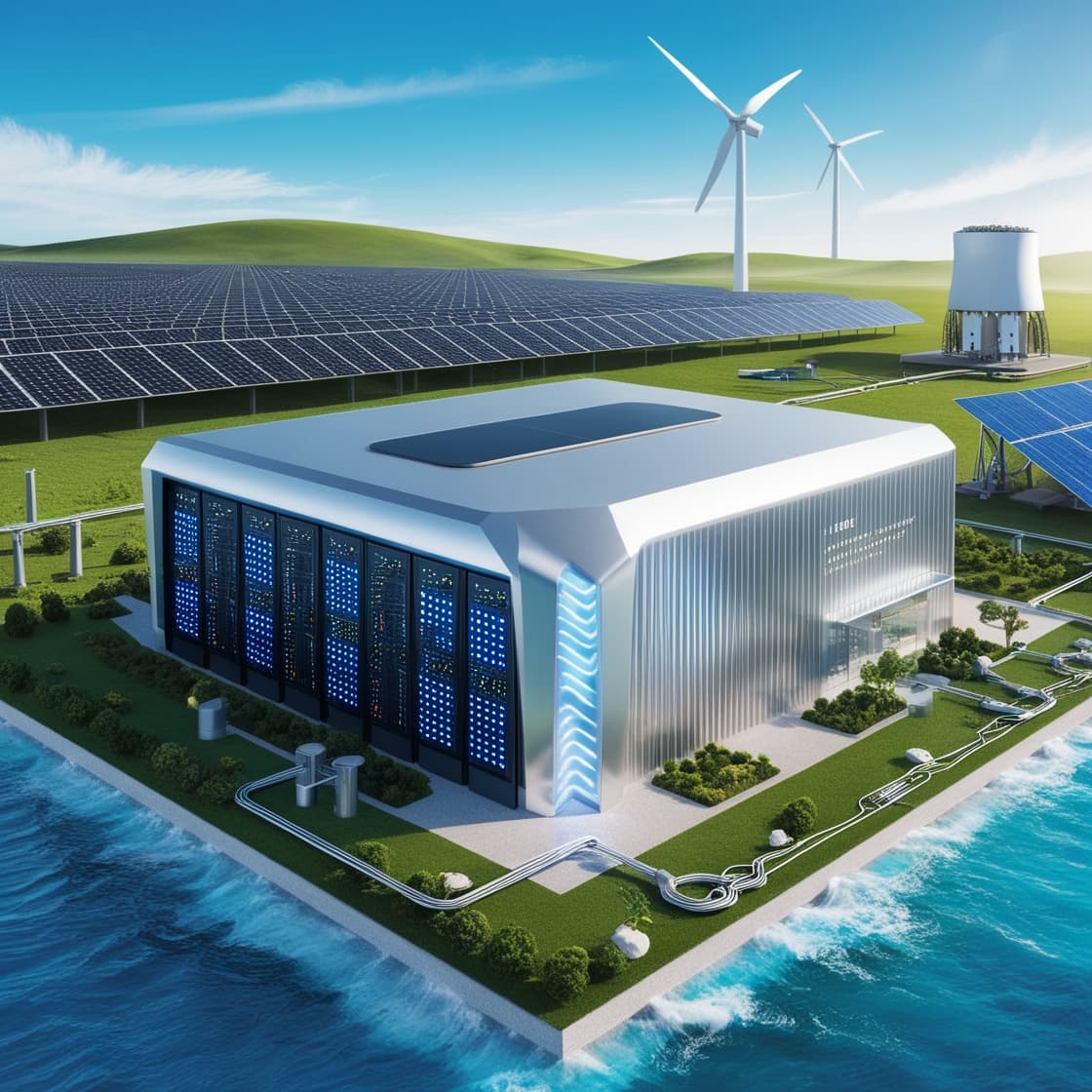Transition Solutions of Renewable Energy Powering AI Data Centers with Potential of Nuclear SMRs
The increasing demand for artificial intelligence (AI) and machine learning (ML) services has led to a surge in energy consumption in data centers. As AI models become more complex, the computational power required to train and deploy them grows exponentially, necessitating robust and reliable energy sources without a power cut. The rapid growth of the tech business and its energy-intensive data centers has sparked a critical discussion about sustainable power sources. Recently, two big players had committed to invest small nuclear reactor technology to power their data centers beyond 2030.
Small Modular Reactors (SMRs) can provide a stable and continuous supply of electricity, making them an attractive option for powering energy-intensive AI data centers. They are compact nuclear reactors designed to be safer, more flexible, and easier to deploy than traditional nuclear power plants. They will offer a promising pathway to meeting the energy demands of AI data centers. However, before the SMRs come into service, the tech industry must focus on alternative renewable energy sources to power the data centers and meet their ambitious climate goals by 2030.

To achieve a transition to renewable energy by 2030, the data center operators must invest in a diversified portfolio of renewable energy sources now. This approach not only ensures a stable supply of electricity but also mitigates the intermittency issues associated with some renewable sources. For example, solar panels can be installed on the rooftops of data centers or in nearby solar farms, providing a direct source of renewable energy. Wind turbines, either onshore or offshore, can generate substantial amounts of electricity, especially in regions with consistent wind patterns. These can be supplemented by energy storage solutions, such as advanced battery systems can be used to store excess energy generated during peak production times. In addition, emerging technologies like tidal and wave energy could also play a role if the data center locates close to coastline.
Along with investing in renewable energy, the data center operators can implement energy-efficient technologies and practices to reduce overall energy consumption. Advanced cooling systems, such as liquid cooling and free air cooling, can significantly reduce the energy required to maintain optimal operating temperatures. Energy-efficient hardware and software optimisations can further enhance the efficiency of AI computations. Moreover, the implementation of smart grid technologies and AI-driven energy management systems can optimise the use of these diverse renewable sources. These systems can predict energy demand, manage load balancing, and efficiently distribute power across the data center infrastructure.
Collaboration between data center operators, renewable energy providers, transmission system operators, and technology companies is essential to accelerate the transition to renewable energy. Partnerships can facilitate the sharing of best practices, the development of innovative energy solutions, and the scaling of renewable energy projects. Government policies and incentives can also play a crucial role in promoting the adoption of renewable energy and supporting the development of SMRs.
By prioritising renewable energy sources and efficiency measures in the short term, the tech industry can make significant progress towards its climate goals. As SMRs become operational after 2030, they will offer a complementary power source to clean energy. These compact nuclear reactors can provide baseload power, ensuring a stable energy supply in a large scale when renewable sources fluctuate. The integration of SMRs with existing renewable infrastructure will create a more resilient and sustainable energy mix for AI and data centers, as well as for the national grid.
In conclusion, while SMRs hold promise for the future of AI data centers, the immediate focus should be on transitioning to renewable energy sources by 2030. By investing in a diversified portfolio of renewable energy, implementing energy-efficient technologies, and fostering collaboration, data center operators can significantly reduce their carbon footprint and ensure a sustainable future for AI and ML services. The journey towards powering AI data centers with clean energy is an opportunity to create a robust, diverse, and resilient energy ecosystem. This approach not only addresses immediate energy needs but also builds a foundation for a sustainable future for our community.

Back




